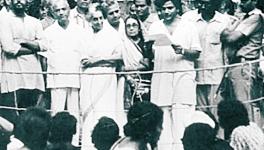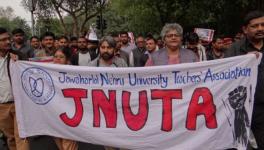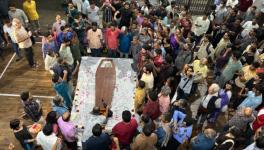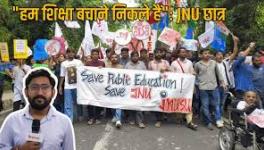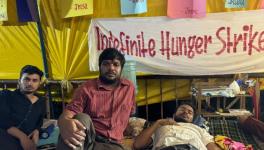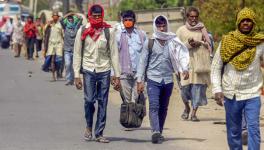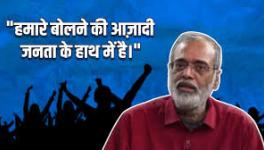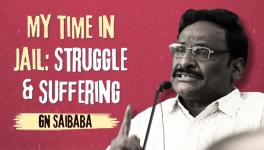The University as a Democratic Institution
Image courtesy: OUP
Written by Gaurav J. Pathania, The University as a Site of Resistance: Identity and Student Politics analyses massive protests that emerged in the aftermath of Rohith Vemula's death in Hyderabad Central University as well as the Azadi Campaign started by Jawaharlal Nehru University students in Delhi in 2016. The book discusses protest strategies, methods, and networks among students. It also examines the role played by various caste and sub-caste groups and civil society in making the movement a success. Taking Osmania University in Hyderabad as a case study, the book provides an ethnographic account of the emergence of one of India's longest student movements – the movement for Telangana statehood.
The following is an excerpt from the preface to the book.
The history of global student activism shows that the university has been fighting for its existence and autonomy while challenging existing traditions in the form of knowledge production. Despite the intervention of the state, the community of scholars constitutes one of the longest surviving democracies in the world (Visvanathan 1999: 51). A range of scholars (Apple 1996, 2011; Bernstein 2000; Giroux 1983; Habermas 1967) understand the university as a democratic institution that instils liberal values of justice, enables ethical/moral and political agency. To make such an institution possible, we must problematize the traditional notion of ‘democracy’ and its long-standing educational cognate,‘equality’, as Giroux et al. (1988) suggests. Among the masses, there is a tendency to look at university life as detached or aloof from reality—a bubble that is often referred to as ‘utopia’, where one is lucky to spend a few years before venturing out into the ‘real world’ for a career. In contrast, Indiresan (1999: 152) argues that ‘campuses cannot remain insensitive to the happenings in society around them’. Campus politics is the space to understand how mainstream politics works and the internal mechanisms and processes involved. Movements and activism are about challenging existing politics. Therefore, it is rare for a student movement to be fully campus-based and concerned mainly with university issues (Altbach 1984: 637). As Touraine (1971: 332) states,‘the university is not a reflection of society; it is society, because it is from now on at the centre of society’s change’.
Also Read: Saffron Nationalism and New Media
Universities have been, as Visvanathan (2016a) defines, ‘the litmus of crisis and democracy’. No democracy can survive without the roots of ethical and philosophical imagination (Visvanathan 2016b: 10). This is the democratic aspect of a knowledge society where ‘discipline and dissent have strange a relationship’. Visvanathan (1999) emphasizes exploring the relationship between the university and liberal democ-racy. He believes that the ‘creative power’ will emerge from these two. Student politics, their activism, and resistance keep this spirit of democracy alive. In Giroux’s (1991: 502) words, the university is ‘a site of political and cultural contestation’. Thus, ideally, the university imparts to students’ humanistic values from a humanistic approach to form a global community.
As an institution or organisation, the university works as the ‘form of mediation between theory and practice’ (Lukács 1968: 299). There is a ‘symbiotic’ (Pant 2008: 171) and ‘reciprocal relationship’ (Heredia 1996: 66) between university and society.28 The university stands in a close relationship to practical life and to the needs of the state, since it is always concerned with the practical aff air of training the younger generation (Humboldt 1970: 248; Giroux 1977: 263). Thus, universities do not exist in a vacuum; they are very much part of society. All in all, the university serves as a site of freedom of thought, social resistance, and through its activism, textures the traditional fabric of society and brings about social change.
Newman, Blehl, Bombogan, and many others have discussed the liberal role of the university. Newman (1982: 15), in his popular book, The Idea of a University, writes that ‘the very name of the university is inconsistent with restrictions of any kind’. Therefore,‘it is a mistake to make virtue or religious training the immediate aims of the university’ (Blehl 1963). There is a real necessity for this ‘universal teaching in the highest schools of intellect’ (Newman 1982: 15; Culler 1965: 261).
Habermas presents a critique of the fundamental idea of the German university and breaks away from the tradition of Kant-Humboldt-Jaspers’ faith in the ‘idea’ of university, and offers a critical renewal of this very idea. He puts forward the renewal of the idea of the university in terms of ‘shared self-understanding’ (Habermas and Blazek 1987: 5). The university, states Bhushan (2016: 39), is a place where the force of rationality will spread among the narrow and broad-minded; self-reflection or philosophizing, if not philosophy, becomes the unifying forces of all sciences.
India, the world’s largest democracy, has more than 37,000 institu-tions of higher education, with 32.3 million students and 1,367,535 faculty members.29 The country produces roughly three million graduates every year and places third in the largest higher education system in the world, behind United States of America and China (Pant 2008: 170). With the arrival of neo-liberal policies in the 1990s, Indian education has been experiencing new socio-political churning. Scholars have debated whether, under the neo-liberal model, the challenges in the fields of finance and public–private partnerships (Bhushan 2013; Chattopadhyay 2012; D’Souza 2004; Kumar 2002; Patnaik 2007; Prakash 2007; Tilak 2013a) and autonomy, access, equity, and quality and excellence (Chattopadhyay 2009; Khora 2015; Kumar 2016; Lall and Rao 2011: 26; Prakash 2011; Tilak 2013b) and exclusion (Guru 1995; Neelakandan and Patil 2012; Attewell and Thorat 2007) explain how education is becoming a commodity in the present age of market liberalization and teachers are becoming ‘Traders of Knowledge’ (Pathak 2017b). By ‘giving away’ their responsibilities to the private sector, governments directly problematize the notion of democracy, a process which Jessop (2002: 199) refers to as ‘de-statisation’. On the other hand, burning issues such as academic corruption, the unregulated mushrooming of universities, and the growing role of middlemen in ‘arranging’ degrees and diplomas have devalued higher education, and made it a commodity which can be purchased by those who can afford it. Moreover, nepotism, bribing, academic corruption, and hiring alumni or one’s personal connections all create a kind of parochialism, explains Guha (2008: 9). Whether based on identity, ideology, or institution, these varieties of parochialism have had a corrosive eff ect on university life, and such parochialism has ‘undermined the quality of teaching, narrowed the range of subjects taught, and polluted the general intellectual ambience’ (Guha 2008: 9). 30 Thus, with such problems and changes in policies, higher education has become an inaccessible and expensive ‘commodity’. This shift from being a public good to private good has deeply impacted the society.
Gaurav J. Pathania holds a PhD in Sociology of Education from Jawaharlal Nehru University, New Delhi. His research examines contemporary student protests and explores caste and regional identity issues in higher education. He is currently a post-doctoral researcher at the Pullias Centre for Higher Education at the University of Southern California and also a visiting scholar at the University of Massachusetts, Amherst.
Get the latest reports & analysis with people's perspective on Protests, movements & deep analytical videos, discussions of the current affairs in your Telegram app. Subscribe to NewsClick's Telegram channel & get Real-Time updates on stories, as they get published on our website.










